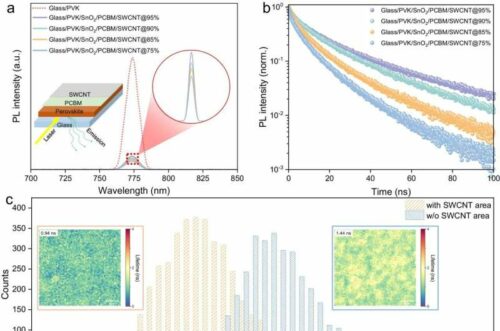This method promises enhanced energy generation and a significant step towards more affordable and efficient solar power by using ultra-thin carbon nanotubes as electrodes.

In recent solar technology advancements, researchers have developed a type of bifacial solar panel using single-walled carbon nanotubes as electrodes on both the front and back surfaces. These nanotubes, with a diameter of just 2.2 nanometers, are thinner than a strand of human DNA and significantly smaller than the thickness of a piece of paper, which would require over 45,000 nanotubes stacked together to match.

The research was conducted by a collaborative team from the University of Surrey, the University of Cambridge, the Chinese Academy of Sciences, Xidian University, and Zhengzhou University in China. Dr. Jing Zhang, a research fellow at Surrey’s Advanced Technology Institute, highlighted the potential of these bifacial cells to harvest sunlight from both sides, thereby generating more energy and reducing dependency on the angle of incident light. The transparency and electrical conductivity of the carbon nanotubes make them a promising material for harnessing clean energy for millions. The team’s bifacial panels have demonstrated an impressive ability to generate more than 36 milliwatts per square centimeter, with the back panel producing nearly 97% of the power generated by the front panel. This efficiency surpasses that of most existing bifacial panels, which typically range from 75% to 95%.
Professor Ravi Silva CBE, director of the Advanced Technology Institute, emphasized the crucial role of solar power in global decarbonization efforts. He pointed out that the cost-effectiveness of solar energy is vital for its widespread adoption. The team’s panels, which can absorb sunlight from both sides, represent a significant step toward making solar technology more affordable. Notably, the production cost of these panels is 70% lower than that of conventional one-sided solar panels. This breakthrough could revolutionize the market and simplify the architectures of perovskite solar cells, further advancing the field of solar energy.







